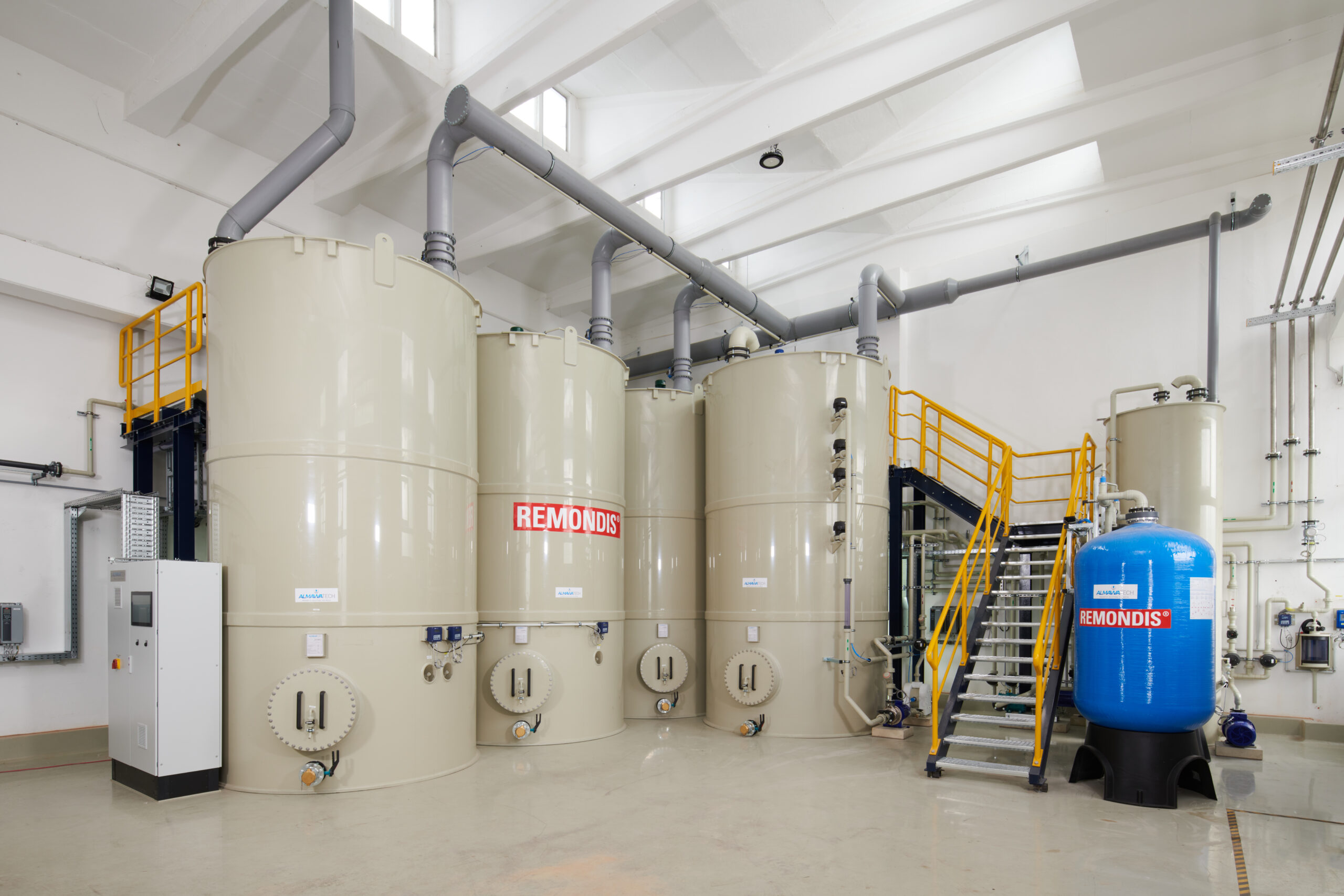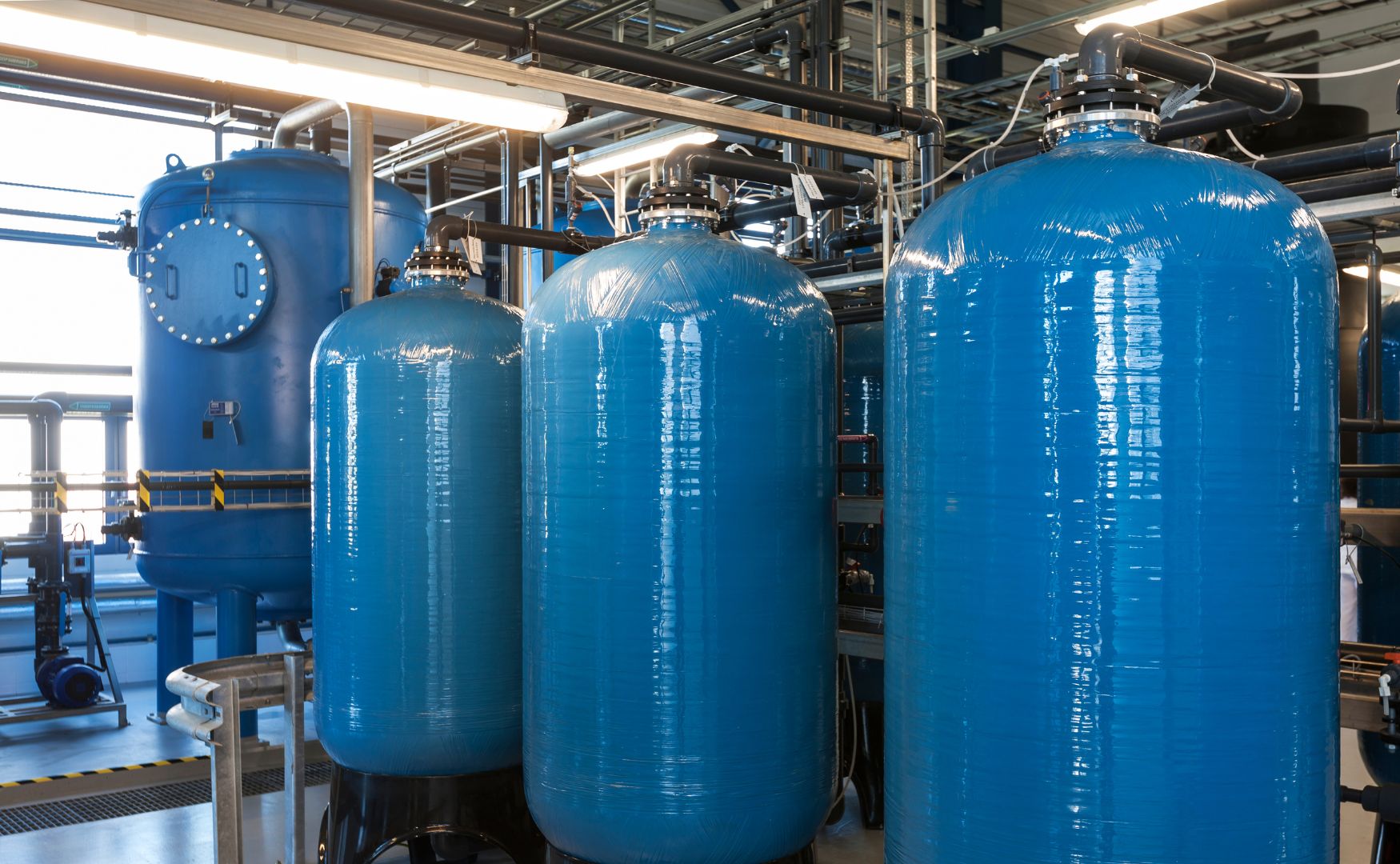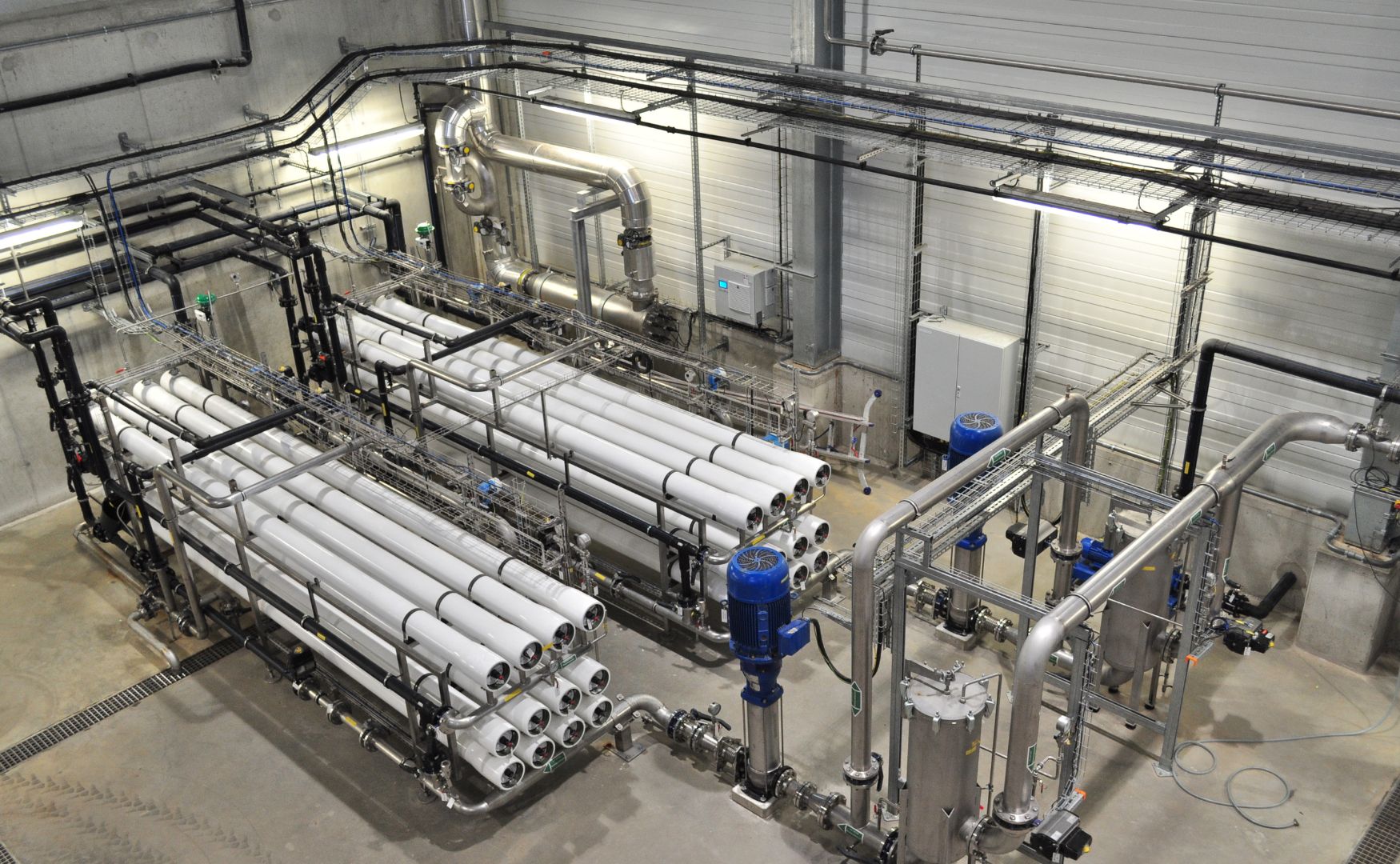Arsenic is a chemical element with the symbol As and atomic number 33. It is a semi-metal and is found in both organic and inorganic compounds. Arsenic is widespread in the environment and can be released both naturally in soils, rocks and waters and through industrial activities such as mining, metal processing and the manufacture of pesticides. Arsenic is a critical substance in water treatment and industrial wastewater treatment, as its inorganic compounds, in particular arsenic(III) (arsenite) and arsenic(V) (arsenate), are highly toxic and can be harmful to health even in low concentrations.
Table of contents
Occurrence and problems in water treatment
Arsenic occurs in natural waters in both dissolved and particulate form. In some regions of the world, such as in parts of South East Asia, arsenic occurs in particularly high concentrations in groundwater. The use of arsenic-containing chemicals in agriculture and industry has also contributed to water contamination in many areas.
The removal of arsenic is crucial in water treatment, as the arsenic guideline level for drinking water has been set at 10 µg/L by the World Health Organization (WHO) and in the EU. Higher concentrations can lead to long-term health problems such as skin changes, cancer and damage to organs such as the liver and kidneys.
Technical challenges in arsenic removal
The removal of arsenic from water poses a challenge due to the chemical properties of the element. Arsenic can exist in different oxidation states, which affects its mobility and reactivity in water. The two most important forms of arsenic in natural waters are
- Arsenite (As(III)): The trivalent form, which is predominantly uncharged at neutral pH and therefore more difficult to remove. Arsenite is particularly toxic in this form.
- Arsenate (As(V)): The pentavalent form present as an anion in water. Arsenate is more reactive than arsenite and can be removed more easily by adsorption or precipitation.
Process for arsenic removal
There are various methods for removing arsenic from water that are based on physico-chemical principles. The choice of the appropriate process depends on the arsenic concentration, the water composition and the quantities of water involved:
1. oxidation and precipitation
- As arsenic(III) is more difficult to remove in its reduced form, it is often converted into arsenic(V) by oxidation. Oxidizing agents such as hydrogen peroxide, ozone or chlorine are used. After oxidation, arsenic(V) can be removed by coagulation and flocculation can be removed. Precipitants such as iron or aluminum salts are used here, which bind arsenic to their hydroxides, which are then separated as flocs.
- Precipitation technology is often used in conjunction with conventional CP systems and is suitable for large volumes of water, such as those produced in municipal waterworks or industrial processes.

Photo: Precipitation and flocculation plant, also known as CP plant, for the reduction of various pollutants and heavy metals. Incl. dosing of hydrogen peroxide (process: ALMA CHEM MCW)
2. adsorption
- Adsorption is one of the most common methods of arsenic removal, especially in the treatment of drinking water. Special adsorption media, such as activated aluminum oxide, iron hydroxide or modified zeolites, efficiently bind arsenic(V) to their surface. This technology is particularly suitable for low to medium arsenic concentrations and offers the advantage that it can be used under relatively simple operating conditions.
- In practice, adsorption media are often used in filtration systems or in ion exchangers used in practice. In reverse osmosis (RO) technology, membrane-based systems can also effectively retain dissolved arsenic compounds, which is used in particular in industrial process water treatment.

Photo: Ion exchanger in GRP tanks(ALMA ION)
3. ion exchange
- Ion exchange is another method of arsenic removal, especially for pentavalent arsenate. Anion exchange resins exchange anions such as arsenate for harmless anions such as chloride or sulphate. This method is particularly efficient in systems with low arsenic concentrations and is often used in combination with other processes.
4. membrane process
- Membrane technologies such as reverse osmosis (RO) and nanofiltration (NF) are particularly effective for removing arsenic and other heavy metals. These processes are based on the physical separation of water and dissolved substances. Membranes with very fine pores allow water to pass through but retain arsenic and other dissolved pollutants. RO technology is often used in the treatment of drinking water and process water, particularly in areas where very low residual concentrations of pollutants are required.

Photo: One of our reverse osmosis systems for industrial applications (Product overview reverse osmosis systems)
Relevance in industrial practice
The removal of arsenic is particularly relevant in industrial wastewater treatment, as it is often found in mining wastewater, semiconductor production, electroplating processes and the chemical industry. Here, the treatment of arsenic-containing wastewater is necessary before it is discharged into the environment or reused in recycling processes. Specialized systems for heavy metal removal in process water treatment must often be designed to remove arsenic in order to comply with legal limits and minimize environmental impact.
Conclusion
Arsenic poses a serious challenge in water and wastewater treatment, both in terms of environmental protection and human health. A comprehensive knowledge of the chemical properties of arsenic and the available removal technologies is crucial to ensure effective and sustainable treatment. By combining physical and chemical processes, arsenic contaminants can be efficiently removed to comply with legal limits and ensure the safety of drinking and process water.








